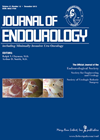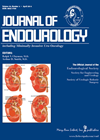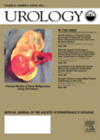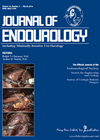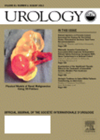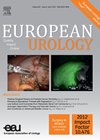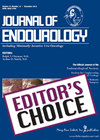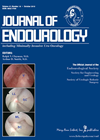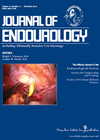
Journal Reviews
RCC recurrence rates post laparascopic partial nephrectomy
In recent years laparascopic partial nephrectomy (LPN) has emerged as an oncologically safe alternative to its radical nephrectomy counterpart. There is however a lack of consensus amongst the urology community regarding surveillance after LPN for patients with stage I tumours....
Robot assisted laparoscopic prostatectomy versus open retropubic prostatectomy – complication and readmission rates
Readmission rates in postoperative patients are an important health economic and clinical challenge faced in the modern NHS, with financial levies attached. In America since 2013, hospitals have been faced with ‘readmission penalties’ deducted from Medicare reimbursements. This was the...
Prostatic artery embolisation – an option for select BPO patients
Few proponents of prostatic artery embolisation (PAE) regard it as a potential standard in future for benign prostatic obstruction (BPO) / benign prostatic hyperplasia (BPH) treatment. Present guidelines from the National Institute for Health & Care Excellence (NICE) and the...
Results of HoLEP in patients with prostate cancer and LUTS
Holmium laser enucleation of the prostate (HoLEP) is recommended for the management of benign prostatic obstruction. With similar functional outcomes and less morbidity compared to transurethral resection of the prostate (TURP), it has become a useful tool in the armament...
Ureteric injury rates during robot assisted radical prostatectomy
Jhaveri et al. and colleagues have produced a timely report on the incidence of ureteric injuries during robot assisted radical prostatectomy. They reviewed the complications of 6442 consecutive patients treated with robot assisted prostatectomy at the same institution by one...
PDE5I in LUTS – how do they work – no proof yet
Phosphodiesterase type 5 (PDE5) inhibitors used in erectile dysfunction (ED) have been shown to improve lower urinary tract symptoms (LUTS) as well. The mechanism is not well understood. One of the hypotheses for benign prostatic hyperplasia (BPH) – LUTS is...
Antibiotics and flexible cystoscopy
This study is from Memorial Sloan-Kettering Hospital in New York, USA. Thousands of flexible cystoscopies are performed every day worldwide. Do they need antibiotic cover? Flexible cystoscopy may cause urinary tract infection (UTI) in less than 10% of cases. Asymptomatic...
Does more equal less in the management of acute renal colic?
Radiographs of kidneys, ureter and bladder (KUB) have long been used in the follow-up of patients with ureteral stones to reassess stone position and surgical planning. Emergence of computed tomography (CT) as the gold standard for the diagnosis of ureteral...
Comparison of PCNL under spinal versus general anaesthesia
There are several advantages of performing percutaneous nephrolithotomy (PCNL) under spinal anaesthesia including lower cost, reduced adverse effects and less tracheal tube displacement. Another advantage is that the patient remains awake throughout making positioning easier and reducing the risk of...
Is the safety wire during ureteroscopy mandatory?
Traditional principles of ureteroscopic training involve the almost religious passage of a safety guide wire (SGW) into the ureter prior to ureteroscopy (URS). The authors compare the clinical outcomes of URS for ureteral stones in two university hospitals with opposite...
Managing staghorn calculi – a return to the dark ages of stone surgery with the aid of the robot
Khurshid Ghani and colleagues present a novel, yet all too familiar, approach to the management of patients with staghorn calculi, in the form of anatrophic nephrolithotomy - however with the aid of a robot. The aim of this study is...
The role of continuous prophylactic antibiotics following JJ stent insertion
Urinary tract infections (UTI) and stent-related symptoms (SRS) are frequently recognised complications of ureteric stent placement. Antibiotic administration at induction prior to ureteric stent insertion is recommended by the European Association of Urology (EAU). Commencing prophylactic antibiotics for the ‘entire...

